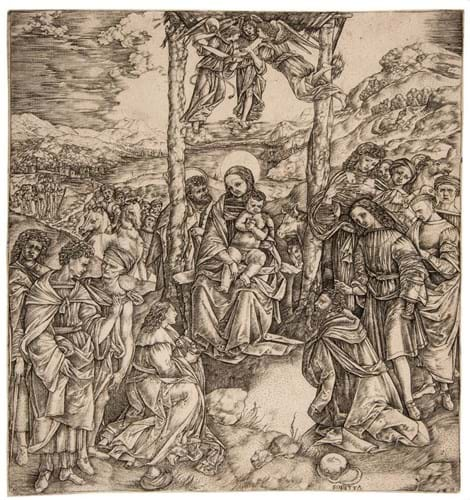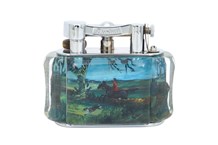
Woodcuts are relief prints. The technique of engraving on a metal plate (an intaglio print) emerged some decades later in the gold and silversmithing workshops of Italy and Northern Europe. Both Martin Schongauer (c.1448-91), the earliest Northern engraver known to us by name, and the towering genius of Albrecht Dürer, were the sons of goldsmiths.
Etchings and aquatints (created using acid) and drypoints (with a needle scratching directly into the plate) are all members of the intaglio family of prints.
Most prints are catalogued with reference to both the date of their impression and their ‘state’.
In an era before the numbered limited edition (a custom of the late 19th century onwards) blocks or plates were reused time and again, causing the matrix to slowly degrade and the image to evolve. It is analysis of these both deliberate or accidental changes – and parallel studies of paper types and watermarks – that has helped to establish the timeline of each print and determine which ‘state’ came before another. The earlier the better.
As London dealer Christopher Mendez puts it: “You wouldn’t want a 19th century Meissen figure if you could afford an 18th century one.”
Fortunately, to help negotiate these sometimes difficult waters, there is a wealth of literature.
It was the Austrian scholar and artist Adam von Bartsch (1757-1821) who, in Le Peintre Graveur, a 21-volume catalogue of prints by Dutch, Flemish, German and Italian painter-engravers from the 15th to the 17th centuries, established what has become the definitive numbering system still used for many artists including Rembrandt.
Many catalogue descriptions will also include a reference to Hollstein’s Dutch & Flemish Etchings, Engravings and Woodcuts, 1450-1700. The first volume was published in 1949 by Friedrich Wilhelm Hollstein (1888-1957), a Berlin print dealer and auctioneer, the 30th and last more than 60 years later.
Other standard reference works include Frits Lugt’s Les Marques de Collections de Dessins & d’Estampes – an aid to tracing the provenance of works on paper by means of studio, institutional, dealers’ and collectors’ marks – while individual catalogue raisonnés exist for many of the key printmakers.














